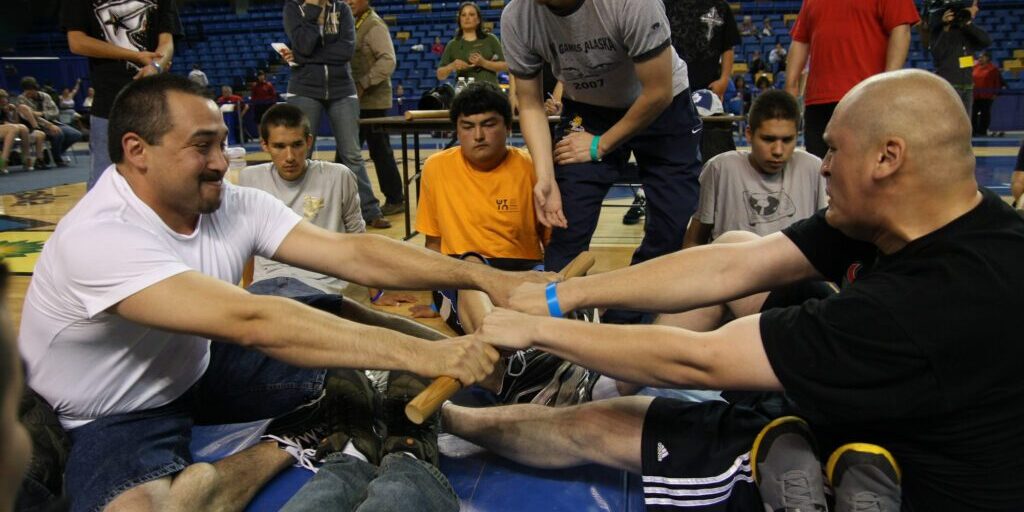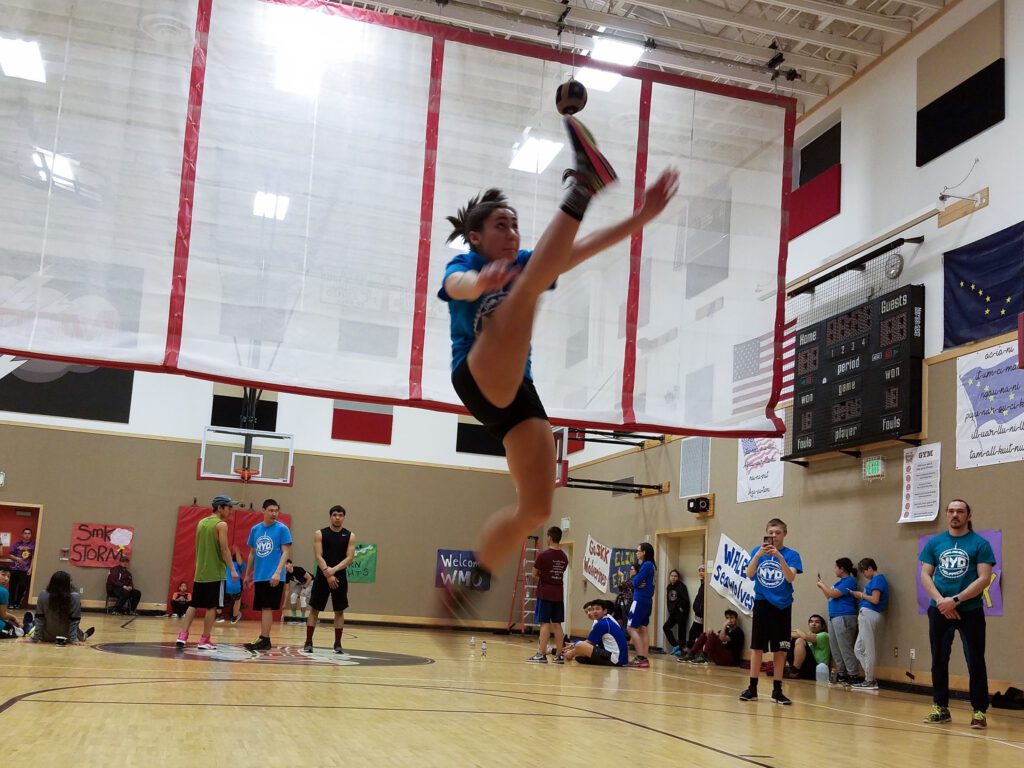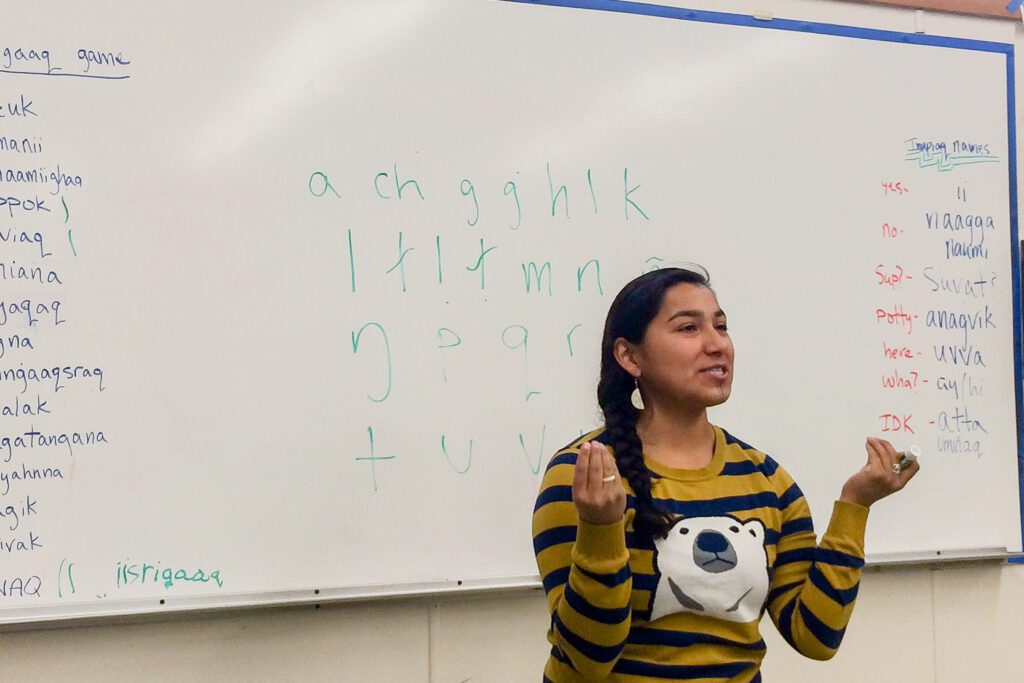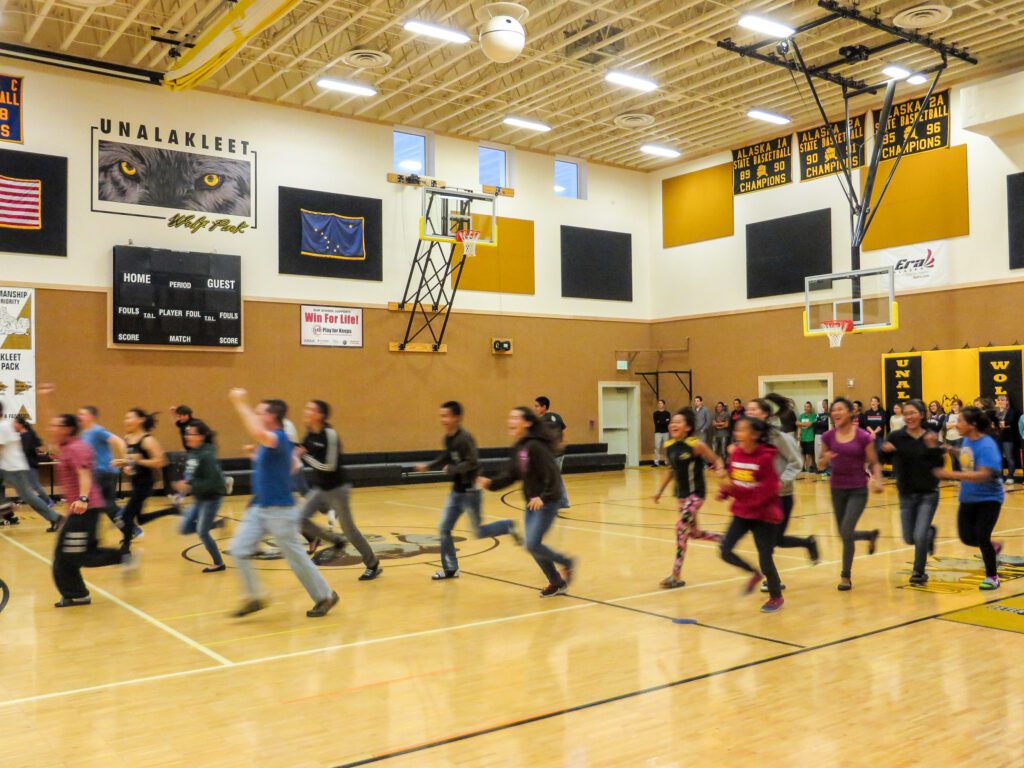After four days of running, jumping, pulling, and filleting, four new world records stand following the 2014 World Eskimo-Indian Olympics. The 54th annual WEIO games wrapped up Saturday in Fairbanks.
Nome’s own Marjorie Tahbone marked the beginning of the games Wednesday after winning the Race of the Torch and helping light the game’s seal oil lamp.
Explaining the games’ significance, Tahbone said, “All these unique games that we have are our own games that our ancestors created to build our bodies to survive in this environment that we live in— this beautiful, flourishing environment.”
Also on Wednesday, Tahbone set a new world record in Fish Cutting at just under 30.58 seconds, beating the former record of 33.59 seconds set by Willa Eckenwieler in 2007.
Describing the moments leading up to the Fish Cutting event, Tahbone said, “I had the fish out in front of me, and I was visualizing how I was going to cut the fish. And I did that for a few minutes and moved my hands to the motions that I would do. And once they said ‘Ready. Set. Go!’ I was off, and I didn’t have to think.”
Tahbone said the world record title is an honor and what it celebrates remains a vital skill with present-day application.
“Families have to catch hundreds of fish at a time,” Tahbone said. “And if you do it too slow, then the fish are not going to be good for cutting anymore. So having the skill of doing it fast and quick and efficient is so important.”
Also setting a new world record Wednesday was Unalakleet’s Nicholes Hanson. Hanson reached 36 feet, seven inches in the men’s Scissor Broad Jump, beating the former record by three-quarters of an inch set by Alan Velasco in 2005. The event resurrected for the first time since 2006, and Hanson trained for the jump as his main event.
Commenting on his preparation for the Scissor Broad Jump, Hanson said, “I was filming it and looking at it and going, ‘Okay, I need to work on that and work on that.’ And it paid off.”
This year’s other world records were set by Wasilla’s Bernard Clark in the men’s One Hand Reach at 70 inches and by Matthew Sido Evans in the Four Man Carry at 241 feet, eight inches.
Mandy Sullivan is the WEIO Event Coordinator and attributes the surge of new records to the advice and training the athletes received and carried over from this year’s Arctic Winter Games.
“That fed into coming in here,” Sullivan said, “because they were getting feedback. They were going into Arctic Winter Games being at the top of their game, and they’ve just maintained that from March. And that’s really made a difference, because they’ve looked at their diet, their exercise regime and made an adequate adjustment to really kind of propel them to this July.”
Though record setting was up, attendance was down. Nichole Johnston is the Chair of the Board of Governors for WEIO and said turnout for both competitors and spectators lowered about 25 percent. But the decline did nothing to diminish the communal and cultural significance of the games.
“Even though attendance is down, the same spirit is there,” Johnson said.” It’s all like we’re having a big family reunion each year. There’s lots of hugs going around and lots of catching up.”
From a participant’s point of view, Hanson said with fewer athletes, especially fewer veteran athletes, less experienced competitors got a chance to step into the “spotlight” and learn from other contenders, elevating what he already considers to be the best example of sportsmanship.
“They get more one on one time with the best athletes,” Hanson said. “And it’s really creating a more in-depth community than it normally has. They’re all giving you pointers and giving you tips on how to beat them, and it’s not about winning the medal. It’s just mostly about doing your best, and everybody’s there for you to help you do your best.”
To see a full list of results from the 2014 WEIO games, visit the World Eskimo Indian Olympics on Facebook and browse their photos.







